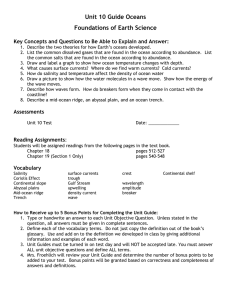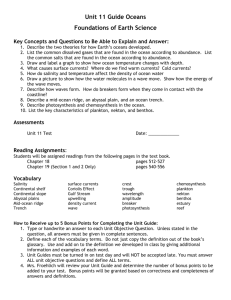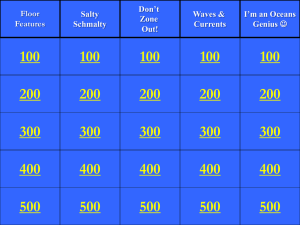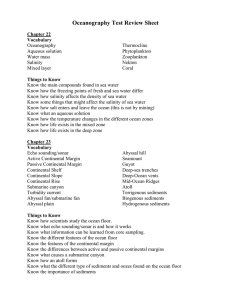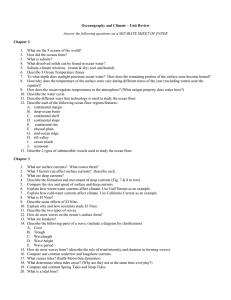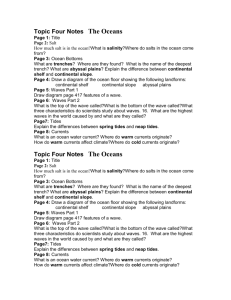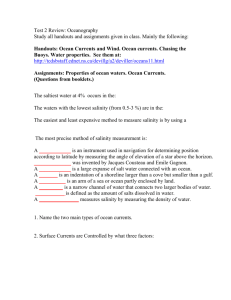Reading Assignments
advertisement
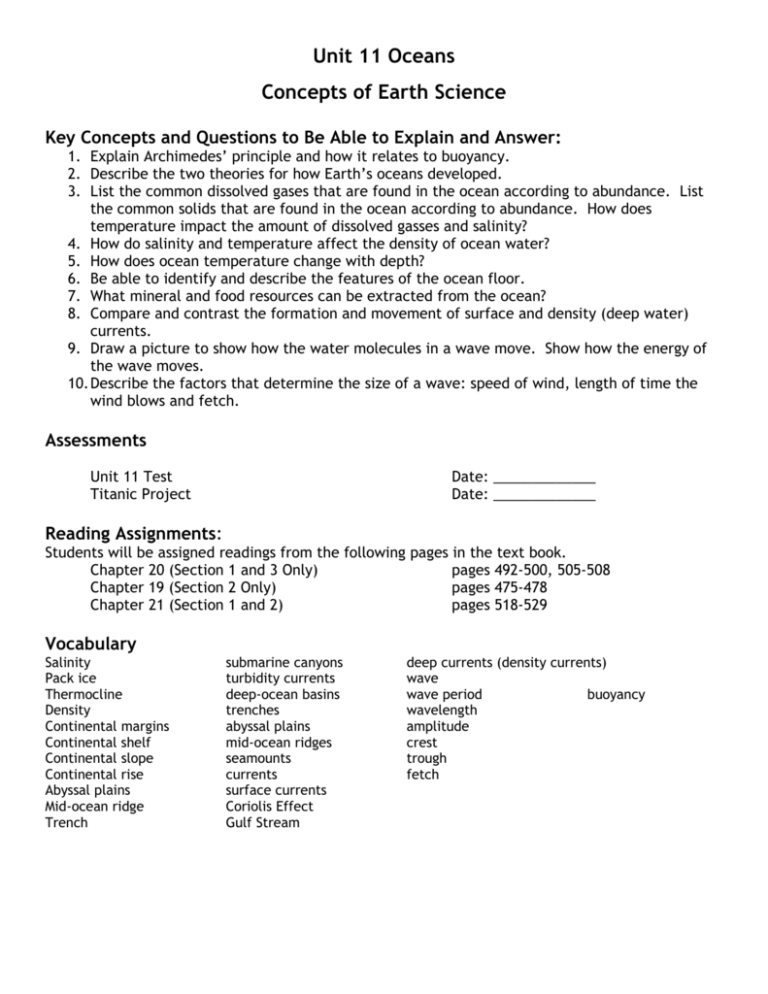
Unit 11 Oceans Concepts of Earth Science Key Concepts and Questions to Be Able to Explain and Answer: 1. Explain Archimedes’ principle and how it relates to buoyancy. 2. Describe the two theories for how Earth’s oceans developed. 3. List the common dissolved gases that are found in the ocean according to abundance. List the common solids that are found in the ocean according to abundance. How does temperature impact the amount of dissolved gasses and salinity? 4. How do salinity and temperature affect the density of ocean water? 5. How does ocean temperature change with depth? 6. Be able to identify and describe the features of the ocean floor. 7. What mineral and food resources can be extracted from the ocean? 8. Compare and contrast the formation and movement of surface and density (deep water) currents. 9. Draw a picture to show how the water molecules in a wave move. Show how the energy of the wave moves. 10. Describe the factors that determine the size of a wave: speed of wind, length of time the wind blows and fetch. Assessments Unit 11 Test Titanic Project Date: _____________ Date: _____________ Reading Assignments: Students will be assigned readings from the following pages in the text book. Chapter 20 (Section 1 and 3 Only) pages 492-500, 505-508 Chapter 19 (Section 2 Only) pages 475-478 Chapter 21 (Section 1 and 2) pages 518-529 Vocabulary Salinity Pack ice Thermocline Density Continental margins Continental shelf Continental slope Continental rise Abyssal plains Mid-ocean ridge Trench submarine canyons turbidity currents deep-ocean basins trenches abyssal plains mid-ocean ridges seamounts currents surface currents Coriolis Effect Gulf Stream deep currents (density currents) wave wave period buoyancy wavelength amplitude crest trough fetch
